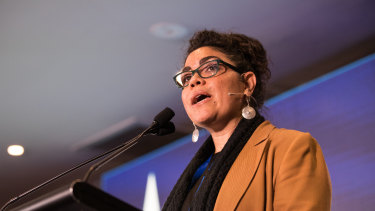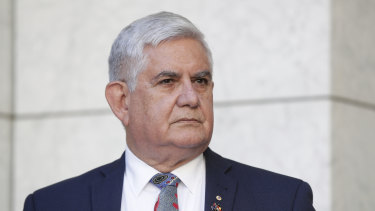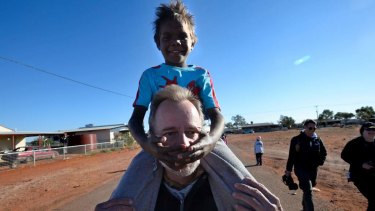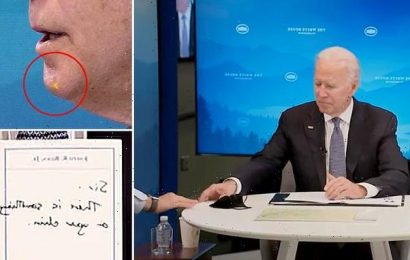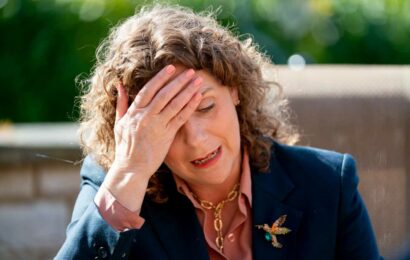The living conditions, education, employment and life expectancy of regional and remote Indigenous communities in Australia are more comparable with those of developing nations.
A Centre for Independent Studies paper, to be released on Monday, maps the state of these Indigenous communities against the rest of the country.
Jacinta Price has authored report on the disadvantages faced by some remote Indigenous communities.Credit:Edwina Pickles
According to the paper’s author, the deputy mayor of Alice Springs, Jacinta Price, inequity is growing because funding is spent as if all Indigenous Australians experience the same adversities.
The Productivity Commission estimates state and territory governments spent approximately $33.4 billion on First Nations people in 2015-16.
Ms Price said the federal government’s Closing the Gap strategy developed to improve living conditions and the wellbeing for Indigenous Australians “has done very little to address disadvantage for Indigenous Australians living in remote and very remote communities”.
“Life expectancy has not improved and school attendance has declined across all states and territories,” she said.
The report reveals that in very remote areas, Indigenous school attendance rates are less than two-thirds, below Zambia (69 per cent) and Iraq (76 per cent); Indigenous men in these areas are expected to live 14.3 years less than the typical non-Indigenous male, placing the communities on par with third world countries such as Yemen, Eritrea and Gambia; and education and employment rates are level with countries such as Afghanistan.
Minister for Indigenous Affairs Ken Wyatt acknowledged the previous Closing the Gap framework was “too slow” and says the new national agreement reflects an approach that will create “joint accountability” between governments as well as Indigenous-led organisations.
Minister for Indigenous Affairs Ken Wyatt acknowledges the former Closing the Gap plan was “too slow” and “unacceptably failed to meaningfully shift Indigenous disadvantage”. Credit:Alex Ellinghausen
Mr Wyatt said the federal government is developing plans based on four new priority reforms to address 18 specific socio-economic targets but said all governments need to examine how they’re working with Indigenous Australians.
Ms Price said more focus needs to be given to regional areas where English is not the first language because “there are serious differences between Indigenous people in remote areas who do not speak English”, compared to those in the cities whose “lives are, more or less, very similar to non-Indigenous residents”, she said.
The report also reveals Indigenous women in remote and very remote areas are expected to live 13.8 less years than an average non-Indigenous woman.
“You’re far more likely to understand symptoms and the need for treatment if you have regular check-ups with a doctor. Many people in these areas believe traditional medicine is sufficient and do not present to a doctor until it is too late”, she said.
“Nationally, Indigenous Australians experience three times the unemployment rate of non-Indigenous Australians.”
The Worlds Apart: Remote Indigenous disadvantage in the context of wide Australia report also reveals high rates of domestic violence. In NSW, the average domestic violence rate in areas with an Indigenous population greater than 50 per cent is nearly 10 times higher than the state average.
Former minister for Indigenous affairs Nigel Scullion says it has always been “challenging” to use the outcomes of the Closing the Gap report because it’s formed around amalgamated information.
Former minister for Indigenous affairs Nigel Scullion, pictured with student Nikihas Coulthard.Credit:Justin McManus
He fears the national statistics “mask” the severity of the situation for much of regional and remote Australia, “we are talking about life and death here, there’s no doubt the Closing the Gap plan has helped Indigenous Australia but most of the impact is limited to urban areas”, he said.
Ms Price added that changes to the national anthem or the date of Australia Day are “token-istic” and should not be the priority.
“I’m more concerned about the incredibly high rates of suicide, crime, domestic violence and low literacy in remote and regional Indigenous Australia. It should be considered a national crisis,” she said.
Start your day informed
Our Morning Edition newsletter is a curated guide to the most important and interesting stories, analysis and insights. Sign up to The Sydney Morning Herald’s newsletter here, The Age’s here, Brisbane Times’ here, and WAtoday’s here.
Most Viewed in National
Source: Read Full Article
